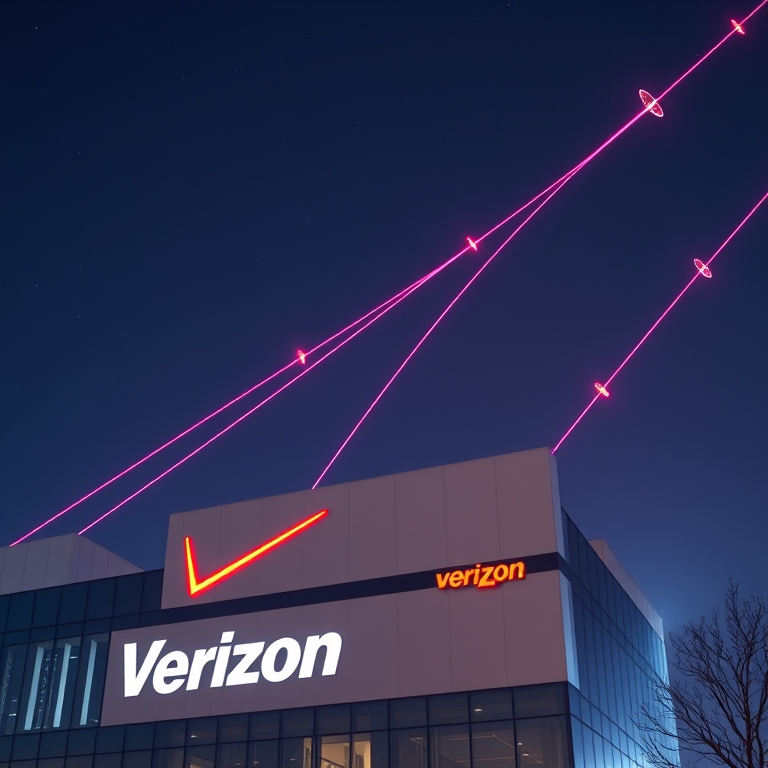In an era where connectivity is as crucial as air or water, the partnership between telecommunications giant Verizon and pioneering aerospace company SpaceX marks a significant milestone in the quest for ubiquitous internet access. Announced amidst a flurry of technological advancements, this collaboration aims to harness the capabilities of SpaceX’s Starlink satellite constellation to bolster Verizon’s existing network infrastructure. The synergy between these two industry leaders is poised to redefine the landscape of global connectivity, making high-speed internet more accessible, reliable, and resilient than ever before.
At the heart of this groundbreaking partnership is Starlink, SpaceX’s ambitious satellite internet project. Initially conceived to provide high-speed broadband to underserved and remote areas, Starlink has quickly evolved into a formidable force in the telecommunications sector. Its low Earth orbit (LEO) satellites, numbering in the thousands, form a dense network capable of delivering high-speed internet with low latency across the globe. This technological feat has not only captured the imagination of consumers but also attracted the attention of established telecom players like Verizon, eager to integrate these capabilities into their service offerings.
Verizon, a stalwart in the telecommunications industry, has long been committed to providing reliable and expansive network coverage. However, despite its extensive infrastructure, there remain areas, particularly rural and remote regions, where traditional terrestrial networks struggle to deliver consistent service. By partnering with SpaceX, Verizon aims to bridge this digital divide. The integration of Starlink’s satellite network with Verizon’s terrestrial infrastructure is set to create a hybrid model that leverages the strengths of both technologies. This approach ensures that users, regardless of their geographical location, can enjoy seamless connectivity, thereby democratizing access to information and digital resources.
The strategic implications of this partnership are profound. For Verizon, incorporating Starlink into its network architecture represents a bold step towards future-proofing its service offerings. As the demand for high-speed internet continues to surge, driven by remote work, online education, and streaming services, the ability to provide consistent, high-quality service becomes a critical differentiator. By augmenting its network with satellite technology, Verizon is not only enhancing its coverage footprint but also building resilience against potential disruptions caused by natural disasters or infrastructure failures.
From SpaceX’s perspective, this collaboration validates the commercial viability of Starlink and underscores its potential as a transformative force in the telecommunications industry. Partnering with a major player like Verizon amplifies Starlink’s reach and accelerates its adoption. This not only generates immediate revenue opportunities for SpaceX but also strengthens its position as a leader in satellite-based internet services. Furthermore, the partnership provides SpaceX with invaluable insights into the operational intricacies of integrating satellite technology with traditional telecom networks, knowledge that will be crucial as it continues to expand and refine its offerings.
The benefits of this collaboration extend beyond the immediate business interests of Verizon and SpaceX. For consumers, the integration of Starlink into Verizon’s network promises more reliable and expansive internet coverage. This is particularly significant for rural communities, where connectivity has often been unreliable or prohibitively expensive. By overcoming these barriers, Verizon and SpaceX are enabling broader participation in the digital economy, facilitating access to online education, telehealth services, and e-commerce, among other essential services. The societal impact of such connectivity cannot be overstated, as it fosters economic development, enhances quality of life, and promotes social inclusion.
Moreover, the partnership sets a precedent for future collaborations between traditional telecom companies and emerging satellite providers. As the telecommunications landscape continues to evolve, driven by technological advancements and shifting consumer expectations, strategic alliances like the one between Verizon and SpaceX will likely become more common. These partnerships offer a blueprint for leveraging complementary strengths to address complex challenges and deliver innovative solutions that meet the needs of a digital-first world.
However, the road ahead is not without challenges. Integrating satellite and terrestrial networks is a complex undertaking that requires meticulous planning and execution. Technical hurdles, such as ensuring seamless handovers between network types and optimizing bandwidth allocation, must be addressed to deliver a cohesive user experience. Additionally, regulatory considerations, including spectrum allocation and compliance with international telecommunications standards, will require careful navigation. Despite these challenges, the potential rewards of successfully integrating Starlink with Verizon’s network far outweigh the risks, making this a venture worth pursuing.
In conclusion, the partnership between Verizon and SpaceX represents a bold and visionary step towards a more connected future. By combining the strengths of satellite and terrestrial technologies, these two industry leaders are paving the way for a new era of internet accessibility. As the world becomes increasingly reliant on digital connectivity, innovations like the integration of Starlink into Verizon’s network are not just beneficial—they are essential. This collaboration not only reaffirms Verizon’s commitment to providing superior service but also cements SpaceX’s role as a disruptor in the telecommunications space. Together, they are reshaping the connectivity landscape, bringing us closer to a world where high-speed internet is a fundamental right, not a privilege.






